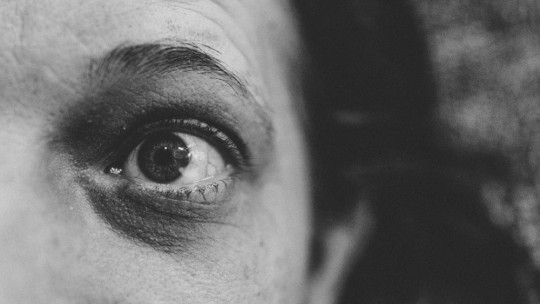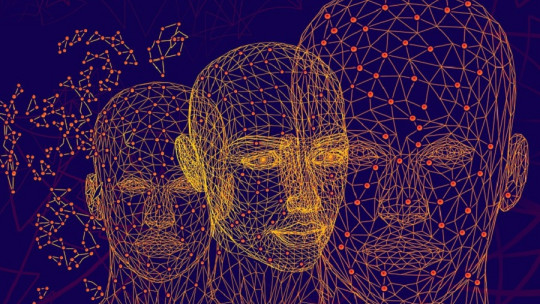Suffering, however unpleasant and painful it may be, is part of human existence. It is something that, like life and death or love and hate, is present to a greater or lesser extent in each of us.
If you suffer too much, it is logical and totally indicated that each person look for methods to reduce this feeling, however, sometimes it happens that the more you try to avoid pain, the more you think about it and, as a side effect, the more you suffer. .
This may be a sign that you are suffering. experiential avoidance disorder , a psychological condition in which all attempts to avoid what produces an aversive sensation ironically means more thinking about it. Let’s look in more detail at its characteristics and what therapies are used to treat it.
What is experiential avoidance disorder?
Experiential avoidance disorder is a disorder in which the person avoids or escapes from an aversive experience Negative sensations, emotions or thoughts are not accepted, focusing all one’s efforts on fleeing from them, but without allowing oneself to continue enjoying life because one has not yet been able to eliminate the aversive experiences.
Among people who suffer from it, it is very common to hear phrases like ‘I need to be well to be able to do things’, ‘I can’t work well if I’m not happy’ or ‘I can’t enjoy exercising while I think about the bad’. This is an example of how the person feels great discomfort due to rumination and, furthermore, is not able to obtain pleasurable sensations because they do not allow them to occur or do not go in search of them.
The disorder is verbal in nature, that is, It is determined by the verbal disposition of the person to classify what is seen as good or bad, based on private events, with both physical and verbal characteristics, in addition to negative evaluations, responses to events and their life experiences.
Problems related to experiential avoidance can appear when one begins to act rigidly to eliminate or avoid internal experience, being a very present factor in the way the person behaves. This will be done consciously at first, but when a certain amount of time has passed, the person will incorporate this avoidance into their repertoire of behaviors, which will become automatic.
Efforts to avoid the unpleasant sensation interfere with emotional responses in addition to endangering aspects considered important and pleasant for the person, such as their hobbies, personal relationships, work and others.
Is avoidance always bad? Characteristics of the disorder
In short, experiential avoidance consists of trying to avoid unpleasant thoughts, sensations and emotions, with the intention of not experiencing them. However, this should not be understood to mean that avoiding something unpleasant is necessarily a psychological disorder. Human beings constantly avoid phenomena that are not pleasant, and it is usually a positive thing.
Avoiding something that could be harmful is, in truth, an adaptive resource , given that one is fleeing from something that can harm the physical or mental integrity of the person. For example, being in the countryside, if you see a bee hovering near where we are, it is okay to move away a little because, even if it has not shown any intention of attacking us, we do not want it to end up doing so either.
However, Avoidance becomes a problem if doing so comes at great cost to the person , both in terms of your emotional state and your physical well-being. It is possible that, to avoid the unpleasant sensation, behaviors are carried out that satisfy in the short term, but that cause harm in the long term. This can be summarized in a simple formula: avoidance is a bad thing when the harm from avoiding is greater than the harm that is avoided.
Symptoms
The proposed diagnostic criteria for this disorder are the following:
Let’s take the case of a person who has just suffered the loss of a loved one The normal thing is to go through the mourning phase, which is sad and undesirable, but totally normal after the death of someone you loved. In this case, the person would be showing behaviors related to experiential avoidance if, instead of accepting the situation or seeking psychological help to overcome the process, he or she consumed alcohol to escape from reality. He is running the risk of becoming an alcoholic.
Possible causes
The main cause that has been hypothesized to explain this little-known disorder is related to the personality of the person who suffers from it. It has been suggested that the origin of experiential avoidance is psychological inflexibility when it comes to managing one’s own discomfort, both trying to escape from it and avoiding it.
By not being able to adapt to the fact that the suffering is going to be there, and having the rigid idea that to enjoy it is first necessary to eliminate all unpleasant sensations the person’s life revolves around avoidance.
The individual shuts down when experiencing painful emotions, sensations and thoughts and is not able to continue with his daily tasks or hobbies. Continuing to think about the bad and not looking for good experiences causes us to enter an increasingly harmful loop. If you suffer from depression or anxiety, this is even worse.
Consequences of experiential avoidance
As we were already saying, if the person who suffers from this disorder also suffers from another negative psychological condition, such as anxiety and depression, the situation can be especially serious.
Disorders whose symptoms are these psychological problems must be treated professionally If the person who is suffering from them is carrying out efficient strategies to increase their well-being, that is something positive and totally appropriate. To the extent possible, mood and anxiety disorders can be overcome.
However, during the recovery process, the person must be aware that they will suffer a certain degree of discomfort, and must accept this while the therapy is taking place. Waiting for all the discomfort to go away to start doing beneficial behaviors on an emotional level, such as hobbies, is a problem that makes it difficult for the therapy to continue, as there are no positive reinforcements that make the person increasingly motivated. and overcome your psychological problems.
Not accepting the discomfort of these problems, avoiding them or escaping from them involves the following situations:
These two avoidant behaviors have, in turn, several implications at the social level in the person’s life. The person progressively isolates himself from his circle of friends and even his family. It is expected to be well to go to the movies, to the gym, to resume studies, to go to work… This can last for a long time, lasting up to months and years.
Treatment: Acceptance and Commitment Therapy
As we already mentioned, suffering is part of any person’s life and, although it is always preferable to find a way to reduce or eliminate the cause of that discomfort, sometimes this option is not possible. There are certain thoughts, sensations and emotions that cannot simply cease to exist and, therefore, looking for ways to make them stop feeling is something impossible.
The best thing in these cases is to accept that you are going to live these experiences, no matter how unpleasant they may be. Focusing on eliminating them can waste enormous energy and give them too much attention, making it difficult for the person to achieve a vital goal that gives them a pleasant feeling.
Acceptance and Commitment Therapy seeks to make the person aware that they are indeed suffering from a certain discomfort, but that You should accept it, not run away from it There are aspects in life that are not going to disappear and waiting for them to be resolved or running away from them are not good strategies if they cause harm to the person’s life in general.
Therapists use different strategies to treat the symptoms associated with experiential avoidance disorder , such as Mindfulness, therapeutic metaphors and cognitive de-fusion. In addition, the focus of therapeutic action is also focused on restoring the most important aspects for the person, such as their hobbies, work, academic, social and family life.
The aim is to get you to stop fighting against your discomfort and, instead, focus on carrying out actions that imply true well-being, which will make you increasingly have a life richer in pleasant experiences and come to accept that being unwell is not It means not being able to enjoy.
A final reflection
In developed societies, especially in the Western world, the philosophy of always being well, of enjoying all activities, both leisure and work, has been promoted. We are not allowed to feel bad, and any negative feeling is seen as a symbol of weakness or a cause for great concern. Being sad, crying, experiencing unpleasant moments are undoubtedly parts of life, but it seems that experiencing them is something that is almost forbidden and those who experience them fight so that no one notices.
Feeling good has become a fundamental aspect in the model of a successful person that has been tried to be imposed both by the media and by more personal environments, such as the family or school. Being always happy is seen as something that is synonymous with being a fully adjusted person, even though this belief is totally wrong.
Euthymia, that is, experiencing all types of feelings within limits considered healthy, is an evolutionary mechanism that allows the survival of the person in addition to their adaptation in social terms. There are days when we feel good, and others not so much. On days when we are sad, we are sad for some reason that, if you think about it, allows us to learn from our mistakes or based on a situation that we did not like. We live in the moment, and it allows us to continue living
If we obsess over being perfectly happy, focusing on avoiding the negative feeling or thought and putting off until later pleasant experiences that we could be doing right now, isn’t it as if we are actually sabotaging our own happiness?
- Luoma, J.B., Hayes, S.C., & Walser, R.D. (2007). Learning ACT: An acceptance and commitment therapy skills-training manual for therapists. Oakland, CA, US: New Harbinger Publications.
- Hayes, Steven C.; Spencer Smith (2005). Get Out of Your Mind and Into Your Life: The New Acceptance and Commitment Therapy. New Harbinger Publications









